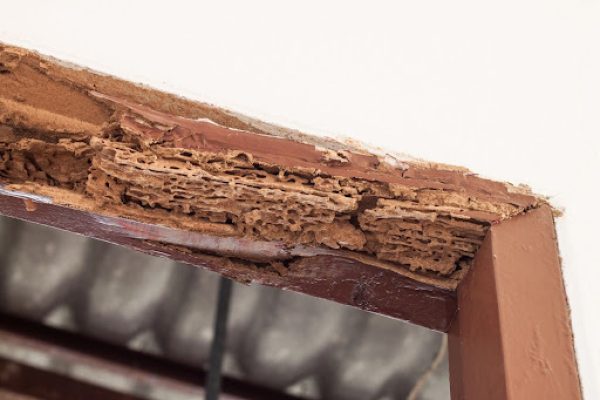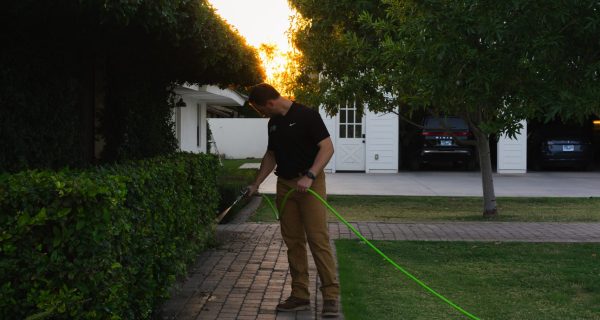Termites are one of the most damaging pests Arizona homeowners face. They cause billions of dollars in property damage every year, often before anyone realizes they are even there. The two most common types found in this region are dry wood termites and subterranean termites. While they are similar in that they both feed on wood, they are very different in how they live, how they are detected, and how they are treated.
We are here to help homeowners understand the key differences between these two destructive pests so they can protect their homes more effectively. Here is what you need to know.
Where they live and how they behave
Subterranean termites live underground. They build massive colonies in the soil and travel back and forth to their food source by creating mud tubes along walls, foundations, plumbing lines, or slabs. These tubes protect them from dry air and predators while helping them move between their nest and your home’s wood structures.
Drywood termites do not need any connection to the soil. They live directly inside the wood they consume. This includes attic beams, hardwood floors, wall studs, and even furniture. Because they live entirely within the wood, they do not build mud tubes like their subterranean cousins. Instead, they stay hidden deep inside structures, which makes early detection more difficult.
What they eat and how they feed
Both dry wood and subterranean termites eat cellulose, which is found in wood and plant materials. Subterranean termites typically focus on softwood and create irregular feeding tunnels filled with mud. Their damage often looks layered, and the surrounding areas may feel damp due to the moist environment they live in.
Drywood termites feed on both soft and hardwood. They create smooth, clean galleries that appear more polished than the tunnels of subterranean termites. They also leave behind small piles of what looks like sawdust. These tiny pellets are actually dry wood termite droppings, called frass, and are one of the most visible signs of their presence.

How to tell them apart
Subterranean termites are usually found by the presence of mud tubes on the outside of your foundation or walls. You may also notice swarming termites near your windows or baseboards, especially during warm seasons. In more serious cases, you might find floors that feel soft or walls that sound hollow when tapped.
Drywood termites are harder to spot. You might discover frass piles on the floor, near furniture, or along baseboards. They do not create mud tubes, so their presence is more subtle. In some cases, you may hear a faint tapping or clicking noise coming from inside the walls as they feed on the wood.
How they are treated

The treatment method depends entirely on the type of termite. Subterranean termites are typically controlled by applying termiticide to the soil around and beneath the home. This creates a protective barrier that kills the termites as they attempt to enter. In some cases, bait stations may also be used to eliminate the colony over time.
Dry wood termites require treatment directly inside the wood they inhabit. This can include localized spot treatments using foam or liquid termiticide. In more widespread infestations, whole structure fumigation may be necessary. However, in Arizona, many dry wood problems can be handled with localized treatments when caught early.
How fast they cause damage
Subterranean termites tend to cause damage faster than dry wood termites because their colonies are much larger. A single colony can include hundreds of thousands of termites that work around the clock. Their ability to access wood from the ground up makes them especially dangerous to a home’s foundation.
Drywood termites work more slowly, but they can be just as destructive over time. Since they are harder to detect, their damage often goes unnoticed until it becomes severe. They can remain hidden in attics, furniture, and wall cavities for months or even years.
How to prevent both types
Preventing termites starts with eliminating their access and food sources. For subterranean termites, remove wood debris, tree stumps, and untreated lumber from your yard. Make sure water does not collect near your foundation, and ensure that your downspouts and gutters are working correctly. Avoid direct wood contact with soil whenever possible.
For dry wood termites, seal any cracks or gaps around windows, doors, and attic vents. Store firewood away from the home, and regularly inspect wooden furniture, baseboards, and trim. Annual termite inspections are one of the most effective ways to catch early activity before it becomes a bigger issue.
Which one is more dangerous
Subterranean termites are usually considered more dangerous due to the speed of damage and size of their colonies. Their ability to attack from underground makes them a major threat to your foundation and framing. However, dry wood termites can also cause significant structural issues when left unchecked. The key to protecting your home is to identify the type of infestation early and apply the correct treatment method.

Get expert help from Green Magic Pest Control
Whether you suspect dry wood termites or subterranean termites, Green Magic Pest Control is here to help. Our expert team knows how to identify each type, recommend the right treatment, and stop the damage before it spreads. We offer thorough inspections, transparent pricing, and tailored solutions to protect your home.
Schedule a free termite inspection today and let us help you take the guesswork out of termite control. Your home deserves nothing less than expert care.

